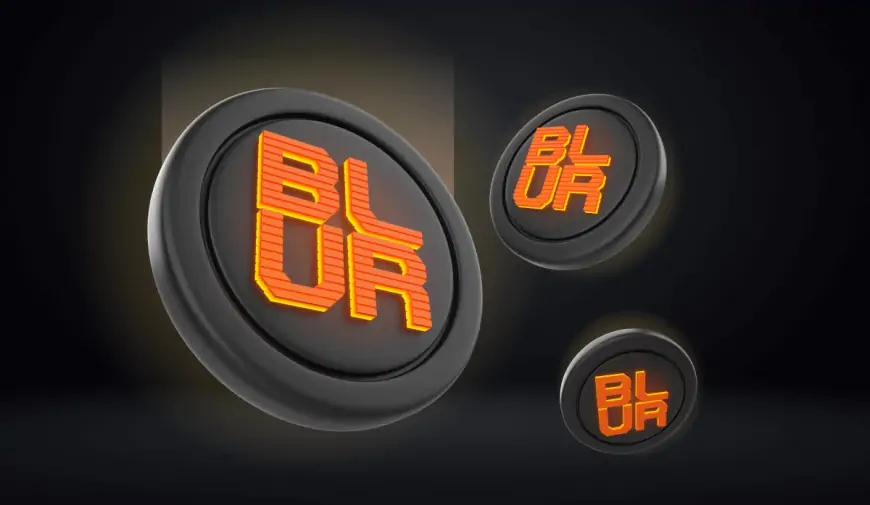What is Blur (BLUR)? A comprehensive guide
Blur (BLUR) is a leading NFT marketplace governed by a decentralized autonomous organization, offering zero marketplace fees and innovative trading options.

For years, OpenSea dominated the market for buying and selling non-fungible tokens (NFTs) as the pioneering and largest platform. Benefiting from its early entry and the explosive growth of NFTs through 2021 and 2022, OpenSea held a substantial market share, overshadowing competitors like Rarible and SuperRare.
However, in late 2022, a new NFT marketplace emerged and quickly gained traction, surpassing OpenSea in weekly transaction volumes by December 2022 and maintaining its lead thereafter. Blur, distinguished by its community governance model and zero marketplace fees aimed at "pro traders," attracted significant interest from users eager to trade CryptoPunks and Mutant Apes.
By January 2024, Blur accounted for more than three-quarters of all NFT trading volume in the cryptocurrency space. The platform expanded its offerings by introducing NFTs as collateral assets, fostering a borrowing and lending ecosystem akin to decentralized finance (DeFi) platforms.
Blur operates under a decentralized autonomous organization (DAO), where holders of its BLUR governance token participate in proposing and voting on initiatives based on their token holdings.
How was Blur developed?
Blur was co-founded by individuals known online as Pacman and Galaga. Initially pseudonymous, they were later identified as Tieshun Roquerre (Pacman) and Anthony Liu (Galaga). Roquerre and Liu met while studying at MIT, and after Liu graduated in 2018, Roquerre dropped out of college (after previously leaving high school early) to co-found the domain name company Namebase. Following the sale of Namebase, they went on to create Blur.
Located in San Francisco, Blur was launched in early 2022, supported by $11 million in seed funding led by investment firm Paradigm, which also backed Namebase. The platform targets professional traders, offering zero platform fees to encourage high-volume trading.
Formally launched in October 2022, Blur expanded its offerings with the introduction of Blend, a peer-to-peer perpetual lending protocol, in May 2023, alongside its growing trading volumes.
How does Blur work?
Blur operates as a dual-purpose platform, functioning both as an NFT marketplace and a crypto lending hub where NFTs can be used as collateral. These functionalities are interconnected, providing mutual incentives for user engagement.
As an NFT marketplace, Blur allows users to connect their Ethereum wallets to list NFTs for sale or place bids on available listings. Beyond basic trading, Blur offers additional features such as "collect" and "trade" modes. The "trade" mode includes advanced tools like detailed charts, market depth insights (showing available NFTs at specific prices), and transaction history tracking. Traders can efficiently purchase multiple low-priced NFTs in one transaction, a process known as "sweeping the floor."
Blend, the platform's perpetual lending protocol, enables borrowers to secure loans by pledging their NFTs as collateral. In the decentralized borrowing and lending ecosystem of DeFi, collateralization ensures lenders can recover their funds if borrowers default. Blend allows borrowers to set terms such as loan amount, interest rate, and collateral price. Once agreed upon, lenders transfer the loaned funds (e.g., ETH) to borrowers, who place their NFTs in a vault as collateral. Unlike traditional loans, Blend loans are perpetual, meaning they have no fixed maturity date.
Borrowers have the flexibility to repay the loan at any time to retrieve their NFT collateral. Alternatively, lenders can initiate a refinancing auction by terminating the contract. In this auction, the interest rate starts at 0% and increases over time until a new lender accepts the terms. If no new lender is found, borrowers can attempt to repay the loan. Failure to do so may lead to the liquidation of the collateralized NFT by the lender to recover the loaned funds.
What are the primary uses of the BLUR token within the Blur platform?
The BLUR token, built on Ethereum, empowers holders to engage in community governance via a decentralized autonomous organization (DAO). Token holders can propose and vote on initiatives that shape the platform's trajectory under the oversight of the Blur Foundation.
Tokenomics and distribution
At inception, 3 billion BLUR tokens were minted. Of this supply, 51% went to community members, 29% to Blur’s contributors and developers, 19% to investors, and 1% to advisors. Within the community allocation, 12% was distributed to NFT marketplace traders through an airdrop, while the remaining 39% formed a treasury, which included provisions for incentive programs. Tokens allocated outside the community underwent vesting periods spanning 4-5 years, concluding by February 2027.












































